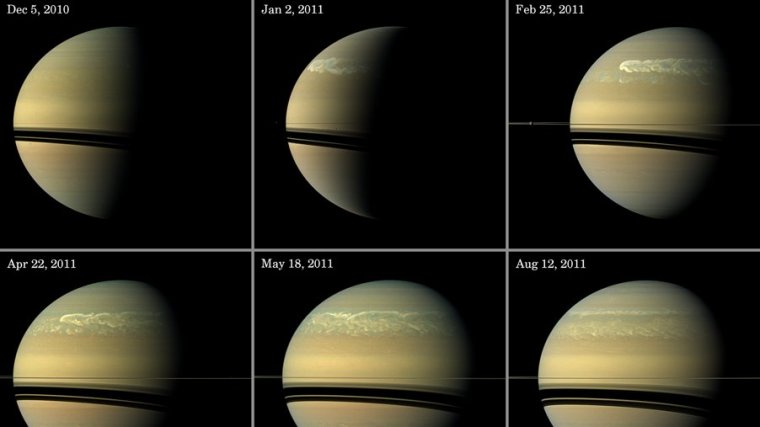| News / Space News |
Study Explains Saturn's Epic Tantrums
NASA | APRIL 14, 2015
The long-standing mystery of why Saturn seethes with enormous storms every 30 years may have been solved by scientists. The tempests, which can grow into bright bands that encircle the entire planet, are on a natural timer that is reset by each subsequent storm.

The development of a huge storm of the type that erupts about every 30 years on Saturn. ![]()
In 140 years of telescope observations, great storms have erupted on Saturn six times. Cassini and observers on Earth tracked the most recent of these storms from December 2010 to August 2011. During that time, the storm exploded through the clouds, eventually winding its way around Saturn.
For decades after one of these storms, the warm air in Saturn's deep atmosphere is too wet, and too dense, to rise. The air above has to cool off, radiating its heat to space, before its density is greater than that of the hot, wet air below. This cooling process takes about 30 years, and then come the storms.
The episodic nature of the storms indicates Saturn's deep atmosphere contains more water, relative to the other atmospheric constituents, than Jupiter.
The researchers suggest Saturn's extra-wet interior might explain why the planet has such epic tantrums, whereas Jupiter does not. If Saturn's deep atmosphere were drier, scientists would expect continuous, smaller storms, as observed on Jupiter. Instead, Saturn's outbursts are episodic and quite explosive.
YOU MAY ALSO LIKE



